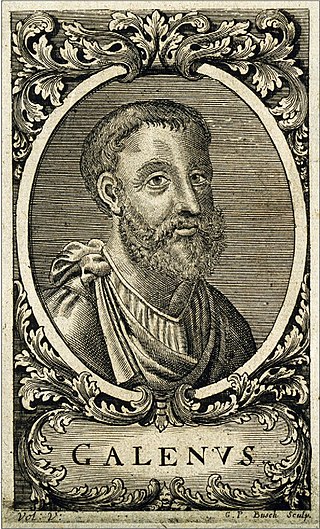
Aelius Galenus or Claudius Galenus, often anglicized as Galen or Galen of Pergamon, was a Roman and Greek physician, surgeon, and philosopher. Considered to be one of the most accomplished of all medical researchers of antiquity, Galen influenced the development of various scientific disciplines, including anatomy, physiology, pathology, pharmacology, and neurology, as well as philosophy and logic.

Andries van Wezel, latinised as Andreas Vesalius, was an anatomist and physician who wrote De Humani Corporis Fabrica Libri Septem, what is considered to be one of the most influential books on human anatomy and a major advance over the long-dominant work of Galen. Vesalius is often referred to as the founder of modern human anatomy. He was born in Brussels, which was then part of the Habsburg Netherlands. He was a professor at the University of Padua (1537–1542) and later became Imperial physician at the court of Emperor Charles V.
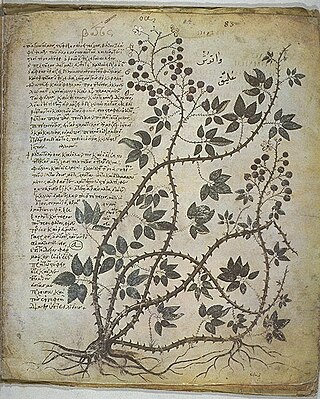
Materia medica is a Latin term from the history of pharmacy for the body of collected knowledge about the therapeutic properties of any substance used for healing. The term derives from the title of a work by the Ancient Greek physician Pedanius Dioscorides in the 1st century AD, De materia medica, 'On medical material'.
This article is a list of the literary events and publications in the 15th century.

Mondino de Luzzi, or de Liuzzi or de Lucci,, also known as Mundinus, was an Italian physician, anatomist and professor of surgery, who lived and worked in Bologna. He is often credited as the restorer of anatomy because he made seminal contributions to the field by reintroducing the practice of public dissection of human cadavers and writing the first modern anatomical text.
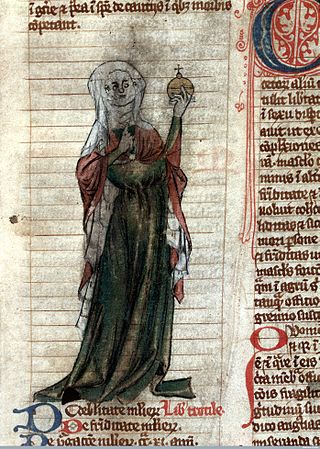
Trotula is a name referring to a group of three texts on women's medicine that were composed in the southern Italian port town of Salerno in the 12th century. The name derives from a historic female figure, Trota of Salerno, a physician and medical writer who was associated with one of the three texts. However, "Trotula" came to be understood as a real person in the Middle Ages and because the so-called Trotula texts circulated widely throughout medieval Europe, from Spain to Poland, and Sicily to Ireland, "Trotula" has historic importance in "her" own right.

The Wound Man is a surgical diagram which first appeared in European medical manuscripts of the fourteenth and fifteenth centuries. The illustration acted as an annotated table of contents to guide the reader through various injuries and diseases whose related cures could be found on the text's nearby pages. The image first appeared in a printed book in 1491 when it was included in the Venetian Fasciculus medicinae, likely Europe's first printed medical miscellany. Thereafter it circulated widely in printed books until well into the seventeenth century. The Wound Man has since become a recognisable figure in popular culture.

A herbal is a book containing the names and descriptions of plants, usually with information on their medicinal, tonic, culinary, toxic, hallucinatory, aromatic, or magical powers, and the legends associated with them. A herbal may also classify the plants it describes, may give recipes for herbal extracts, tinctures, or potions, and sometimes include mineral and animal medicaments in addition to those obtained from plants. Herbals were often illustrated to assist plant identification.

De Humani Corporis Fabrica Libri Septem is a set of books on human anatomy written by Andreas Vesalius (1514–1564) and published in 1543. It was a major advance in the history of anatomy over the long-dominant work of Galen, and presented itself as such.

Aulus Cornelius Celsus was a Roman encyclopaedist, known for his extant medical work, De Medicina, which is believed to be the only surviving section of a much larger encyclopedia. The De Medicina is a primary source on diet, pharmacy, surgery and related fields, and it is one of the best sources concerning medical knowledge in the Roman world. The lost portions of his encyclopedia likely included volumes on agriculture, law, rhetoric, and military arts. He made contributions to the classification of human skin disorders in dermatology, such as myrmecia, and his name is often found in medical terminology regarding the skin, e.g., kerion celsi and area celsi. He is also the namesake of Paracelsus, a great Swiss alchemist and physician prevalent in the Medical Renaissance.
Rogerius, also called Rogerius Salernitanus, Roger Frugard, Roger Frugardi, Roggerio Frugardo, Rüdiger Frutgard and Roggerio dei Frugardi, was a Salernitan surgeon who wrote a work on medicine entitled Practica Chirurgiae around 1180. It is also called Chirurgiae Magistri Rogerii.

Pseudo-Apuleius is the name given in modern scholarship to the author of a 4th-century herbal known as Pseudo-Apuleius Herbarius or Herbarium Apuleii Platonici. The author of the text apparently wished readers to think that it was by Apuleius of Madaura (124–170 CE), the Roman poet and philosopher, but modern scholars do not believe this attribution. Little or nothing else is known of Pseudo-Apuleius.
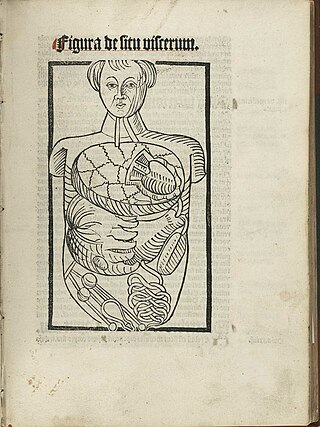
Magnus Hundt or Magnus Canis, also known as Parthenopolitanus, was a German philosopher, physician and theologian. Hundt coined the term anthropology, and he and Otto Casmann have been mentioned as founders of anthropology since they used the term in the 16th century.

Hans von Gersdorff, also known as Schyl-Hans, was a German surgeon who published the Feldbuch der Wundarzney in 1517, with instructions for procedures such as amputation. It was illustrated with woodcuts attributed to Hans Wechtlin.

Henri de Mondeville was a medieval French surgeon who made a significant number of contributions to anatomy and surgery, and was the first Frenchman to author a surgical treatise, La Chirurgie (1306-1320). Very little is known about the details of his early life. There is some doubt about his birthplace as according to ancient Norman custom, his last name is derived from the place of birth, and is variously spelled as Amondeville, Esmondeville, Mandeville and so on.
John of Gaddesden (1280–1361) was a medieval English physician. He wrote a treatise on medicine titled Rosa Medicinae, also called Rosa Anglica, between 1304 and 1317, considered to be the first English textbook of medicine. John of Gaddesden was also a Roman Catholic theologian, a fellow at Merton College, Oxford, a physician for members of the British royal family, and one of the most celebrated medical authorities of his time. His medical works, alongside those of Gilbertus Anglicus, "formed part of the core curriculum that underpinned the practice of medicine for the next 400 years".

Johannes de Ketham was a German physician living in Italy at the end of the fifteenth century. Little is known about him, but he has been identified by many as a physician practicing in Vienna in 1460 named Johannes von Kirchheim.

The Hortus Sanitatis, a Latin natural history encyclopaedia, was published by Jacob Meydenbach in Mainz, Germany in 1491.
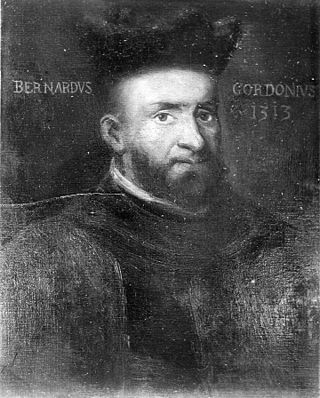
Bernard de Gordon was a French doctor and professor of medicine at the University of Montpellier from 1285. In 1296 he wrote the therapeutic work, De decem ingeniis seu indicationibus curandorum morborum. His most important work was the Lilium medicinae, printed in Naples in 1480, Lyon in 1491, and Venice in 1494. It describes plague, tuberculosis, scabies, epilepsy, anthrax, and leprosy. In the 15th century, it was translated into Irish by physician and scribe Cormac Mac Duinnshléibhe.

Gian Giacomo Bartolotti was an Italian physician from Parma who practiced in Venice. He was the son of the physician Pellegrino Bartolotti, and a nephew of Francesco Bartolotti. He published a history of medicine of the period, Opusculum de antiquitate medicinae.


















